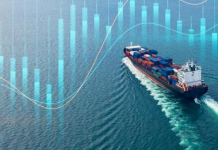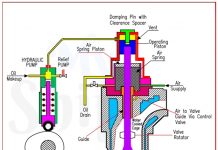
Q. Explain the different machinery linked emergency situations that are dealt as documented process under “emergency preparedness”. Underline the salient actions that are documented in dealing with
a. Main engine failure
b. Steering gear failure
c. Electrical /Power Failure
d. Boiler automation failure
Answer:-
The international management code for the safe operation of the ships & for pollution prevention (ISM Code ) gives the guide lines for the Emergency preparedness under Clause 8. According to this clause
8.1) The Company should establish process to identify describe & respond to potential emergency shipboard situations.
8.2) The Company shall establish programmes for drills & exercises to prepare for the emergency actions.
8.3) The safety management system should provide for the measures assuring that the Company’s organization can respond at any time to hazards, accidents & emergency situations involving its vessels.
The different machinery related emergency situations under the emergency preparedness are
a. Main engine Failure:-
This is a very dangerous situation as it results in the immobilisation of the ship. It is further dangerous if the vessel is under manoeuvring or in the restricted area or facing a rough weather. Personal especially engine room staff has to be very alert & reactive to this situation. Communication between Wheel house & engine room is of utmost importance. Depending on the situation the damage to the machinery should be avoided but giving safety of the vessel the most importance.
It can be divided into different types which forms emergencies such as Scavenge fire, Uptake fire, crankcase explosion, etc
b. Steering gear failure:-
This is a situation which endangers the manoeuvrability of the ship, which can be dangerous situation during manoeuvring, river passage, shallow water passage, restricted & heavy traffic zones & bad weathers. This situation is best tackled by the proper emergency preparedness & response through proper training & drills. Again communication with bridge is very important. Process should be laid down for the emergency steering & all personnel should know the
procedure to do so, generally the Junior officers, Crew (Deck & Engine). Photographic easy to understand instructions to be placed in the steering gear compartment.
c. Electrical /Power Failure:-
This is also the most dangerous situation if the standby auxiliaries do not supply power. This situation not only causes immobilization of the ship & lost manoeuvrability but also safety concerns to the people on board which may lead to injury. Drills of the power failure to be performed as actual, not merely by simulation. The CE & EEO along with 2nd Engineer to check that the emergency Generator comes on load in the short time frame & all emergency power supply restored. This may also lead to the emergency steering situations is occurs in channels or the areas with heavy traffic.
d. Boiler Automation Failure:-
This emergency should be tackled with the patience. First the boiler pressure to be keep to the bare minimum by firing in emergency mode. The forced draught fan vanes to close after pressing up so as to keep the pressure for longer durations. The process can be documented depending on the situations & people trained through training drills.
Salient Actions in Dealing with
A ) Main engine Failure :-
1) Inform bridge and take controls to ECR.
2) Raise engineers alarm and inform C/E
3) Start Aux engine which is in standby.
4) Record time of the failure / Maintain timings of the events.
5) Assess the situation & if the repair / restarts need considerable time then prepare for the anchorage if depth permits.
6) Ascertain cause of failure.
7) Ascertain if Shore assistance is required.
8) Ascertain time needed to repair start repair & inform bridge of the progress & expected time of completion.
9) Inform company’s technical department.
10) After rectifying the fault, start main engine & try out in ahead & astern direction
11) Make a report of failure & damage.
B ) Steering gear failure :-
1) Engage alternate or emergency steering system.
2) Advise Engine Room.
3) Call Master.
4) Check vessels in vicinity.
5) Check navigational hazards in the vicinity.
6) Use Engines as needed.
7) Make appropriate sound signals as needed.
8) Exhibit shapes / lights as needed.
9) Use VHF Channel 16 / 70 (DSC) as needed.
10) Consider anchoring if required & suitable depth is available.
11) Fix position of vessel.
12) Record time of the failure.
13) Ascertain cause of the failure.
14) Ascertain time needed to repair.
15) Ascertain if shore assistance is needed.
16) Make entry of all facts in the log book.
17) Forward initial report to all concerned.
C ) Electrical Failure:-
1) In the event of loss of the main power, there would be an quick shut down of the main propulsion, which would lead to a dangerous situation, if they were to be manoeuvring in narrow congested water or near coast line.
2) Although the emergency generator would start & come on load it is not possible to restart the main engine till the main alternators are restarted & taken on load.
3) Communicate with bridge & if vessel is under manoeuvring in high traffic zone then exhibit the “NUC” signal.
4) Raise engineers call alarm. All engineers to proceed to the engine room.
5) If stand by generator has not started, start same & take on load. Make sure to keep enough reserve air in the Main Air Bottles to start the other Generators if needed or to start the main engine which might be required in heavy traffic areas. Run the Emergncy air compressor & fill up the emergency Air Bottle. Keep an eye on Running of the emergency Equipment.
6) Confirm sequential start of all the essential machineries.
7) Change over main engine control to ECR & reset trips. Resetting of the governor in some cases is needed as it gets stuck on a Blackout Situation. This same should mention in the SMS manual.
8) Restart the plant & confirming all in order, restart mainengine after confirming from the bridge.
9) Make report of the failure & log in the engine room log book. Make sure all time & events are logged & the same are in the Deck Log Book as well.
10) Check continuously for the running generators parameters.
D) BOILER AUTOMATION FAILURE:-
1) Chief engineer to be informed & then inform bridge. If steaming then there is some buffer time to sort out the fault. Trace the alarm events in the data logger; this will give some lead to what might have been the initial problem.
2) Man the engine room if UMS ship. Or Change over the boiler & see if the other is working fine on Auto.
3) call for assistance & report matter to the Electrical officer
4) If total automation failure then run on the emergency Mode. Procedures will be laid down in the SMS Manual



